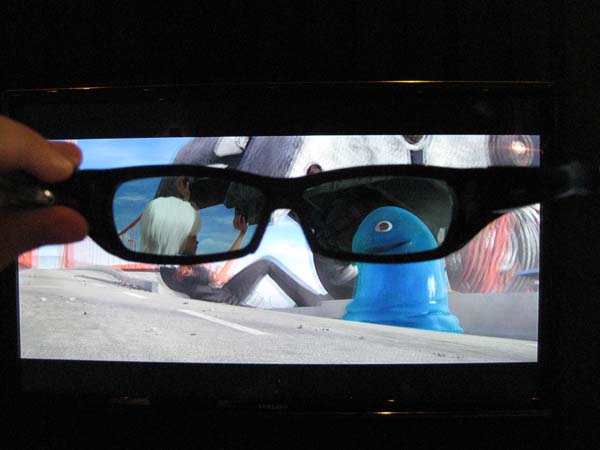 So we all knew that Channel Nine was going to be broadcasting the State of Origin in 3D this year, but the ACMA has just announced officially that it has granted a special license to Channel Nine and SBS to conduct a scientific trial of 3D broadcasts for two months, starting May 19.
So we all knew that Channel Nine was going to be broadcasting the State of Origin in 3D this year, but the ACMA has just announced officially that it has granted a special license to Channel Nine and SBS to conduct a scientific trial of 3D broadcasts for two months, starting May 19.
But don’t let the inclusion of SBS up there trick you into thinking that they’ll be broadcasting some World Cup action in 3D – turns out that both SBS and Nine agreed to coordinate their efforts for this scientific trial. The ACMA announcement also makes it clear that the two month trial is not an indication that regular 3D broadcasts are coming later this year.
Still – it will be interesting to see how many people tune in to watch the State of Origin in 3D this year, and how many of them tune out not long after kick off to watch it in regular 2D…
3D TV trials
The ACMA has approved 3D TV trials for a two month period: 19 May to 19 July 2010.
The 3D TV trials will be broadcast in digital mode by the SBS on UHF channels in Sydney (Channel 35), Adelaide (Channel 29) and Perth (Channel 35) and by the Nine Network in Melbourne (Channel 35), Brisbane (Channel 50), Newcastle (NBN Ltd) (Channel 35), and in Wollongong (WIN Television) (Channel 50). Each trial will carry both SBS and Nine services. Viewers in these locations will access the trial through logical channel number 40 on a 3D-enabled digital television set.
The UHF channels allocated for the trials are unassigned channels (generally known as Channel B). Together with other unallocated BSB spectrum known as Channel A, Channel B was previously reserved for digital television services such as a limited range of in-home broadcasting services and for mobile television services.
The concept of Channel A and Channel B has been discarded by the government as part of the current policy review of the allocation and use of spectrum known as the digital dividend (spectrum to be vacated upon the switch-off of analog television).
In November 2009, the Minister for Broadband, Communications and the Digital Economy announced that, as part of a pathway to digitisation, unassigned spectrum previously known as Channel A would be allocated to community television in each mainland metropolitan market until analog switch-off in 2013. This announcement left the former Channel Bs as the only BSB spectrum available for temporary use until the process of finalising the digital dividend is complete. The government’s recently released Green Paper on the digital dividend identifies this channel as part of the spectrum to be recovered from broadcasting use and made available for new wireless technologies. The ACMA is able to temporarily allocate available unassigned broadcasting services band (BSB) spectrum under section 34 of the Broadcasting Services Act 1992. One of the purposes for which such spectrum can be allocated is conducting trials of new radiocommunications technologies.
In April 2010 the ACMA received applications from both the SBS and Nine that to conduct trials of 3D TV using unassigned BSB spectrum. Following negotiations between the broadcasters that resulted in a single combined trial to be conducted in each market, the ACMA received applications for transmitter licences in Sydney, Melbourne, Brisbane, Adelaide, Perth, Newcastle and Wollongong.
The licences issued by the ACMA are scientific apparatus licences issued under section 100 of the Radiocommunications Act 1992. Triallists of new radiocommunications technologies require an apparatus licence in order to operate a transmitter.
Under conditions attached to the apparatus licences, Nine and SBS will manage telephone hotlines which will assist in responding to viewer and community enquiries with respect to the operation of the trial. The ACMA has also required Nine and SBS to make further information concerning the trial (and its limited time period) available to the public through local media outlets in each area before test transmissions begin.
The approval of the 3D TV trials for a period of two months is not an indication that the future permanent allocation of these UHF channels will be for broadcasting purposes. That is a matter for consideration by the government.